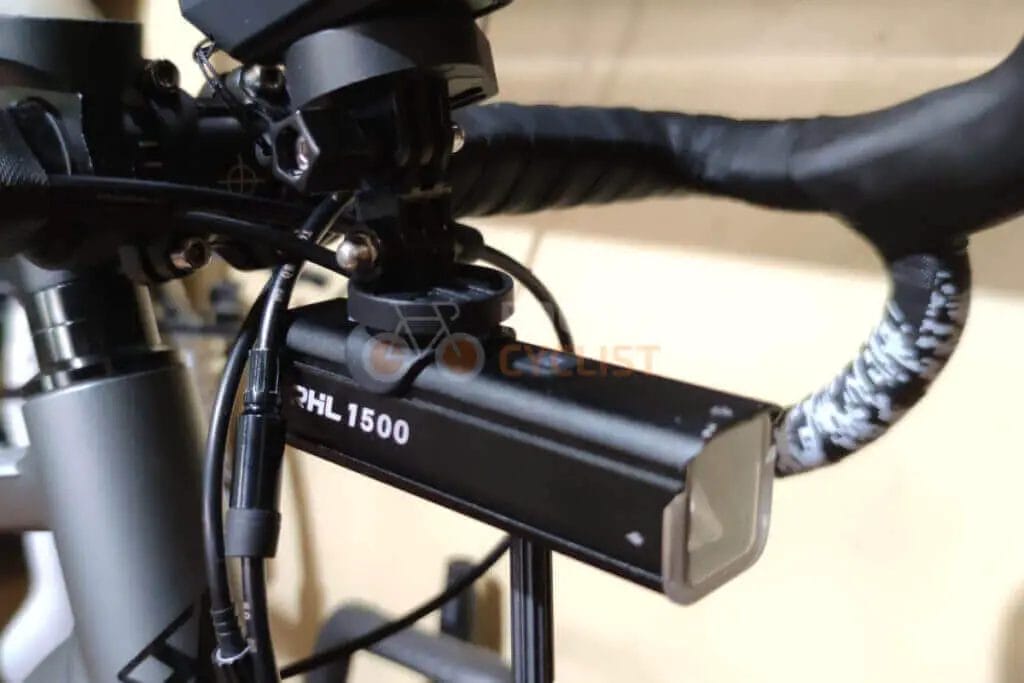Last Updated on December 5, 2024 by Vinson Lozano

Bike lights and electronics are essential components for any cyclist, enhancing both safety and performance. Whether you’re a commuter navigating city streets after dark or a mountain biker exploring rugged trails, understanding how to maintain your bike’s lighting and electronic systems is crucial. This guide will delve into the best practices for keeping these vital parts in top condition, ensuring they function optimally and extend their lifespan.
Key Takeaways
- Importance of Regular Maintenance: Regular checks and maintenance can prevent failures and ensure safety.
- Choosing the Right Equipment: Selecting quality lights and electronics can enhance durability and functionality.
- Battery Care: Proper battery management is crucial for longevity and performance.
- Cleaning and Storage Tips: Learn how to clean and store your bike’s electronics to prevent damage.
- Troubleshooting Common Issues: Identify and fix common problems with bike lights and electronics.
- Upgrading Your System: Considerations for upgrading to more efficient and powerful options.
- Professional Help: When to seek professional assistance for maintenance and repairs.
Understanding Bike Lights and Electronics
Types of Bike Lights and Their Uses
Bike lights come in various types, each serving a specific purpose. Front lights illuminate the path ahead, while rear lights make you visible to traffic from behind. Safety lights, often smaller and less intense, provide additional visibility without the need for high output. Understanding the different types of lights will help you choose the right setup for your cycling needs.
The Role of Electronics in Modern Cycling
Modern cycling electronics include more than just lights. Devices like GPS units, electric gear shifters, and cycling computers add functionality and enhance the cycling experience. These devices require careful handling to maintain their precision and reliability.
Maintenance Tips for Optimal Performance
Regular Inspection and Cleaning
Regularly inspect your bike lights and electronics for any signs of wear or damage. Clean the devices using a soft cloth and mild detergent, avoiding harsh chemicals that can damage the materials or electronic components.
Battery Management
Proper battery care is essential, especially for rechargeable models. Keep the batteries charged and avoid depleting them completely before recharging. Store batteries in a cool, dry place and consider carrying spare batteries for longer rides.
Handling and Storage
Handle all electronic devices with care, avoiding impacts and excessive force. Store your bike and its electronic components in a dry, temperature-controlled environment to prevent moisture damage and extend their lifespan.
Troubleshooting and Repairs
Common Issues and Quick Fixes
Learn to identify common issues such as dimming lights, unresponsive gadgets, or erratic behavior. Simple fixes like resetting the devices, checking the connections, or replacing the batteries can often resolve these problems.
When to Seek Professional Help
If basic troubleshooting doesn’t resolve the issue, it may be time to seek professional help. A qualified technician can provide a thorough inspection and carry out necessary repairs or replacements.
Upgrading Your Bike’s Lights and Electronics
Consider upgrading your bike’s lighting and electronic systems for better performance and durability. Newer models often offer improved energy efficiency, higher output, and advanced features like programmable settings or connectivity with other devices.
Conclusion: The Importance of Maintaining Bike Lights and Electronics
Maintaining your bike’s lights and electronics is not just about performance; it’s also about safety. Regular maintenance ensures that your equipment functions properly when you need it most. By following the tips outlined in this guide, you can enjoy safer, more reliable rides.
Explore More About Bike Safety and Performance
If you’re interested in further enhancing your cycling experience, consider exploring more about bike safety and performance. Remember, while DIY maintenance can be effective, always seek professional advice for complex issues.
Thank you for reading! Feel free to share your experiences or ask questions in the comments below. Happy cycling!
FAQ: Frequently Asked Questions
- How often should I check my bike lights?
- Check your bike lights before every ride to ensure they are functioning correctly.
- What is the best way to clean bike electronics?
- Use a soft cloth slightly dampened with mild detergent; avoid direct water exposure.
- How long do bike light batteries last?
- Battery life varies by type and usage but typically ranges from a few hours to several days on a single charge.
- Can I use any charger with my bike lights?
- Use only the charger provided with your lights or one recommended by the manufacturer to prevent damage.
- What should I do if my bike light gets wet?
- Dry it thoroughly with a soft cloth and check for functionality. If issues persist, consult a professional.
- Is it worth upgrading to LED bike lights?
- Yes, LED lights offer better efficiency, brighter output, and longer lifespan than traditional bulbs.
- How can I extend the life of my bike’s electronic systems?
- Regular maintenance, proper storage, and careful handling are key to extending the life of your bike’s electronics.
- What are the signs that my bike electronics need professional repair?
- Persistent issues, decreased performance, or physical damage are signs that professional repair may be needed.
- Can I install additional lights on my bike?
- Yes, additional lights can be installed for enhanced visibility, but ensure they do not interfere with existing equipment or the bike’s operation.
- Are there waterproof options for bike electronics?
- Many modern bike electronics are designed to be water-resistant, but always check the specific ratings and manufacturer recommendations.


